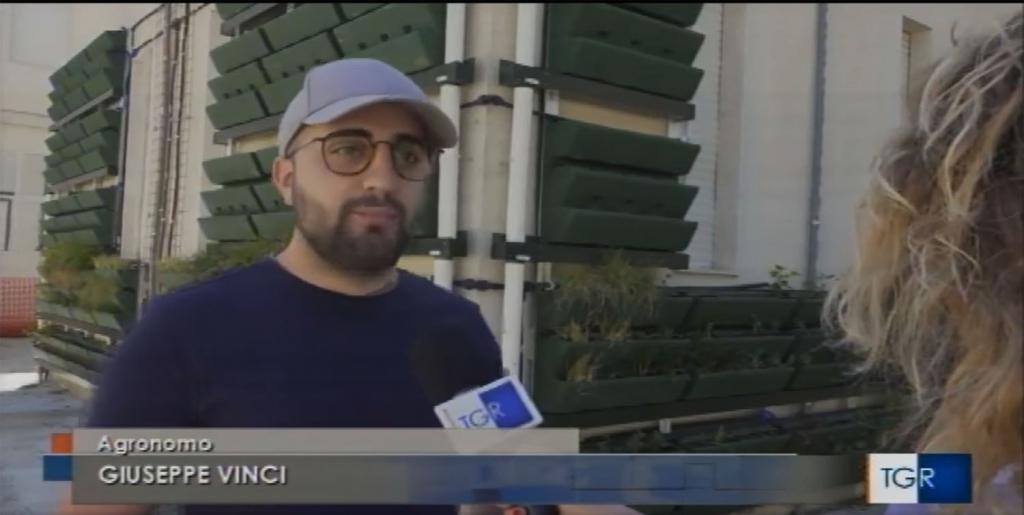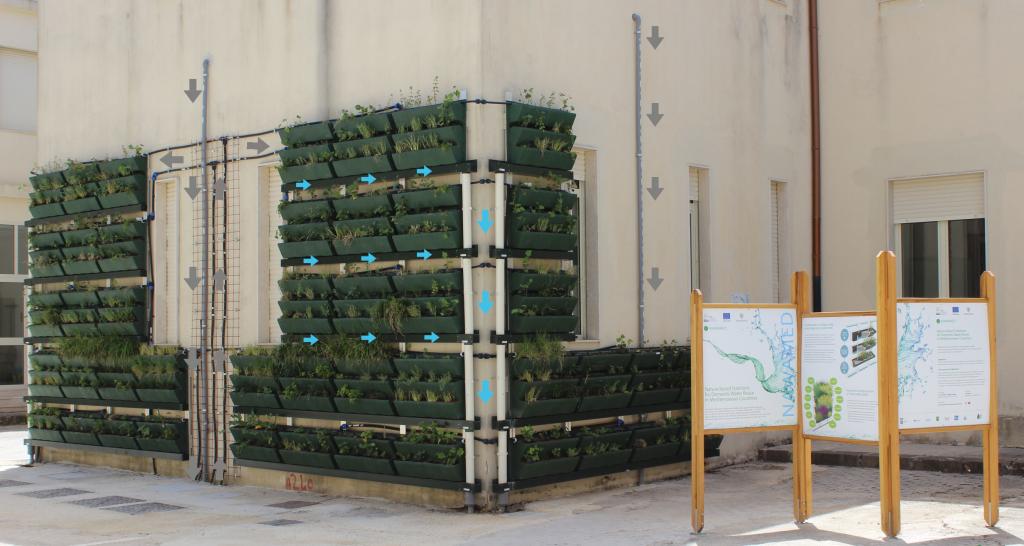NAWAMED: Sicilian students save approximately 1000 litres each of potable water per year thanks to the innovative treatment plant installed in their school
On Monday, 30th of May, a team of representatives of the Municipality of Ferla, the Euro-Mediterranean Center for the Sustainable Development – SVI.MED, and IRIDRA hosted the launch of a Green Wall designed to collect, treat and make available for reuse the greywater of the local school “Istituto Comprensivo Statale Valle dell’Anapo”.

The green wall, called “Wall2Water (W2W)” by its creators of the engineering firm IRIDRA, is one of a kind. Unlike more common green facades that can be found nowadays in several cities, the Ferla Wall2Water purifies greywater from the school bathroom facilities and makes it reusable for toilet flushing, thus reducing the consumption of high-quality drinking water.
In recent years, scientists and engineers have focused on ways to exploit the possibility of treating greywater with natural techniques in urban contexts, with solutions that use normally unused surfaces, such as walls and roofs, thus saving space on the ground. Nonetheless, only a few examples exist outside the inner circle of university lab-scale attempts, namely, the VertECO, an indoor green wall system purifying stormwater and greywater developed in the EU funded project demEAUmed, or the Total Value Wall a building envelope designed and tested for the treatment of greywater in Continental climate conditions by a consortium of academic, NGO and private partners (some data available at https://doi.org/10.1016/j.jenvman.2021.113489). The Ferla Wall2Water contributes to this exciting new frontier of green infrastructure, offering multiple ecosystem services and aesthetic functions in urban areas by integrating a nature-based solution into a public building in a Mediterranean climate location.
How does it work?
From a functional point of view, the system involves the collection of water (mostly from washbasins) in a small tank, followed by a pumping system to feed the green wall. The water percolates through the pots through a piping system, and a tank collects it for subsequent reuse. An ultraviolet lamp further supports the treatment process with a disinfection booster. The green wall is composed of modules hung on the wall made up of pots whose filling material supports the development of bacterial biofilm, the main agent of the treatment processes. The plant species hosted by the pots promote bacterial biodiversity and allow the water to distribute itself evenly in the pots, guaranteeing purifying efficacy and having an aesthetic and cooling function.
The green wall covers a surface of some 30 square meters, designed to maximise the treating capacity and efficacy and ease the maintenance by the local municipal workers and keep the maintenance costs low. Approximately 1.3 cubic meters per day will feed the system, reducing the consumption of potable water currently used for flushing the toilets and the amount of water reaching the public sewage. The estimation is to save around 1,000 litres of potable water per year for each student in the building. 
By financing the NAWAMED project and its pilot plants, the ENI CBC MED programme supported the recently launched New European Bauhaus initiative. Indeed, green walls perfectly comply with the values of the initiative, connecting sustainability goals to daily lives and living spaces. The Wall2Water and similar technologies contribute to achieving several objectives apart from reducing water consumption, such as cooling, air filtration, increasing local biodiversity, building aesthetics, and improving the quality of experience and style beyond functionality and affordability. On top of these benefits, the Ferla Wall2Water plant has the enormous advantage of being hosted in a school, bringing along high educational and communicational purposes, and setting a best practice example for other municipalities.
NAWAMED is working hard to finalise the other plants expected in other public buildings in Lebanon, Jordan and Tunisia, further testing the Wall2Water technologies and similar approaches in different Mediterranean contexts. In Autumn, Sicily will host an international event where participants will discuss results and lessons learned and propose strategies for fostering nature-based solutions and the use of non-conventional water. Stay tuned!









